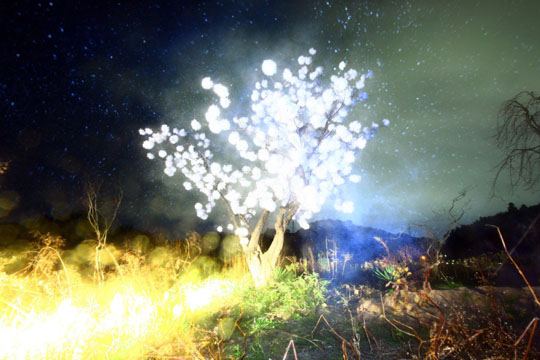At the opening press conference for "Roppongi Crossing 2010," the U.S-based French artist Jules de Balincourt said that he was impressed how the exhibition revealed to him that the contemporary art being produced in Japan could just as easily have been created anywhere in the world — that trends in art here were the same as elsewhere.
Many of the artists at this year's "Roppongi Crossing," who were selected by Chieko Kinoshita (a lecturer at Osaka University's Center for the Study of Communication-Design), Kenji Kubota (an independent curator) and Kenichi Kondo (associate curator at the Mori Art Museum), are young and use unusual materials and presentation methods. More importantly, the works they are creating show fresh new concerns: Neither influenced by manga/anime, nor fitting into the MicroPop theory of personalized, insignificant gestures, they appear instead to be more engaged with the world around them.
Aki Yahata's strange quasi- documentary video installation of individuals who exist on the outskirts of society — for no identifiable or "curable" reasons — obliquely addresses issues of death, love and the beauty of life in an earnest manner that never lets the audience in on whether this is all for real or not.



















With your current subscription plan you can comment on stories. However, before writing your first comment, please create a display name in the Profile section of your subscriber account page.